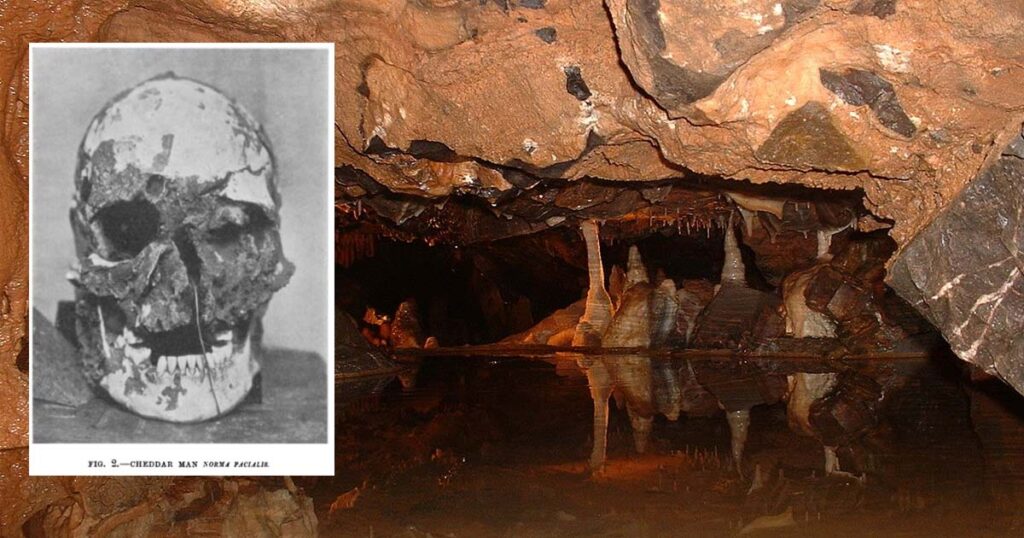Who Was Cheddar Man?
Cheddar Man refers to the ancient skeletal remains discovered in Gough’s Cave, nestled in Cheddar Gorge, Somerset, England. Unearthed in 1903, his remains are estimated to be around 10,000 years old, dating to the Mesolithic period. This makes him one of the oldest complete human skeletons found in Britain. Cheddar Man provides an invaluable link to the past, offering insights into the lives of early hunter-gatherer societies.
The Discovery in Gough’s Cave
The discovery of Cheddar Man came at the turn of the 20th century during an excavation in Gough’s Cave. Initially, his remains were simply an archaeological curiosity. However, with advancements in scientific techniques, researchers began to uncover a wealth of information about this ancient Briton.
Gough’s Cave itself is a significant site, containing evidence of human habitation and activity over thousands of years. The cave’s preservation conditions allowed Cheddar Man’s skeleton to remain remarkably intact, making it an extraordinary find for the study of human prehistory.

Appearance and Genetic Insights
In recent years, cutting-edge DNA analysis of Cheddar Man’s remains has provided a clearer picture of his physical appearance and genetic makeup. Contrary to earlier beliefs that ancient Britons were light-skinned, findings revealed that Cheddar Man likely had dark skin, dark curly hair, and striking blue or green eyes.
This discovery challenged conventional perceptions about the genetic diversity of early Europeans, showing that lighter skin pigmentation became widespread much later due to adaptations to agricultural lifestyles and reduced sun exposure.

Lifestyle of Mesolithic Hunter-Gatherers
Cheddar Man lived in a time when Britain was transitioning from the harsh conditions of the Ice Age to a more temperate climate. As a hunter-gatherer, his diet would have consisted of meat, fish, nuts, and berries. Archaeological evidence suggests that his community relied on stone tools and practiced a nomadic lifestyle, following seasonal food sources.
The remains also suggest that early Mesolithic societies had cultural practices, potentially including rituals around burial, though more research is needed to confirm this.
Legacy and Modern Relevance
Cheddar Man has become a symbol of the interconnectedness of ancient and modern humans. DNA studies even revealed a remarkable connection: some living residents of Cheddar Gorge share genetic markers with him, demonstrating continuity in the population over thousands of years.
Today, Cheddar Man’s reconstructed appearance and story are on display at the Natural History Museum in London. His discovery has reshaped our understanding of prehistoric Britain, providing an enduring link to the origins of modern European populations.

Conclusion
Cheddar Man is more than just a relic; he is a storyteller of an ancient world. Through his bones and DNA, we glimpse the resilience and adaptability of humanity in a rapidly changing environment. His legacy continues to inspire both scientific inquiry and public fascination, bridging the gap between the distant past and the present day.

